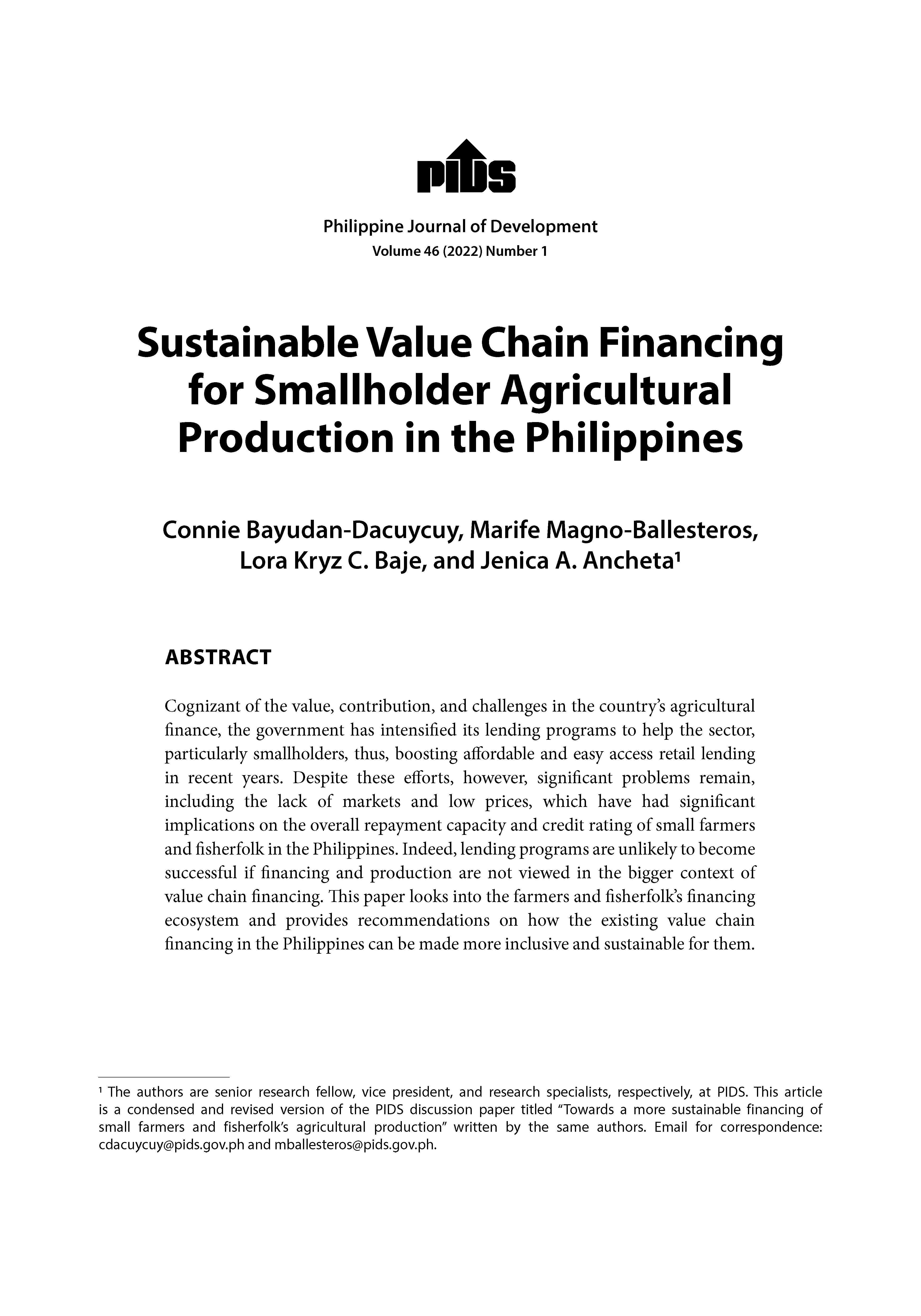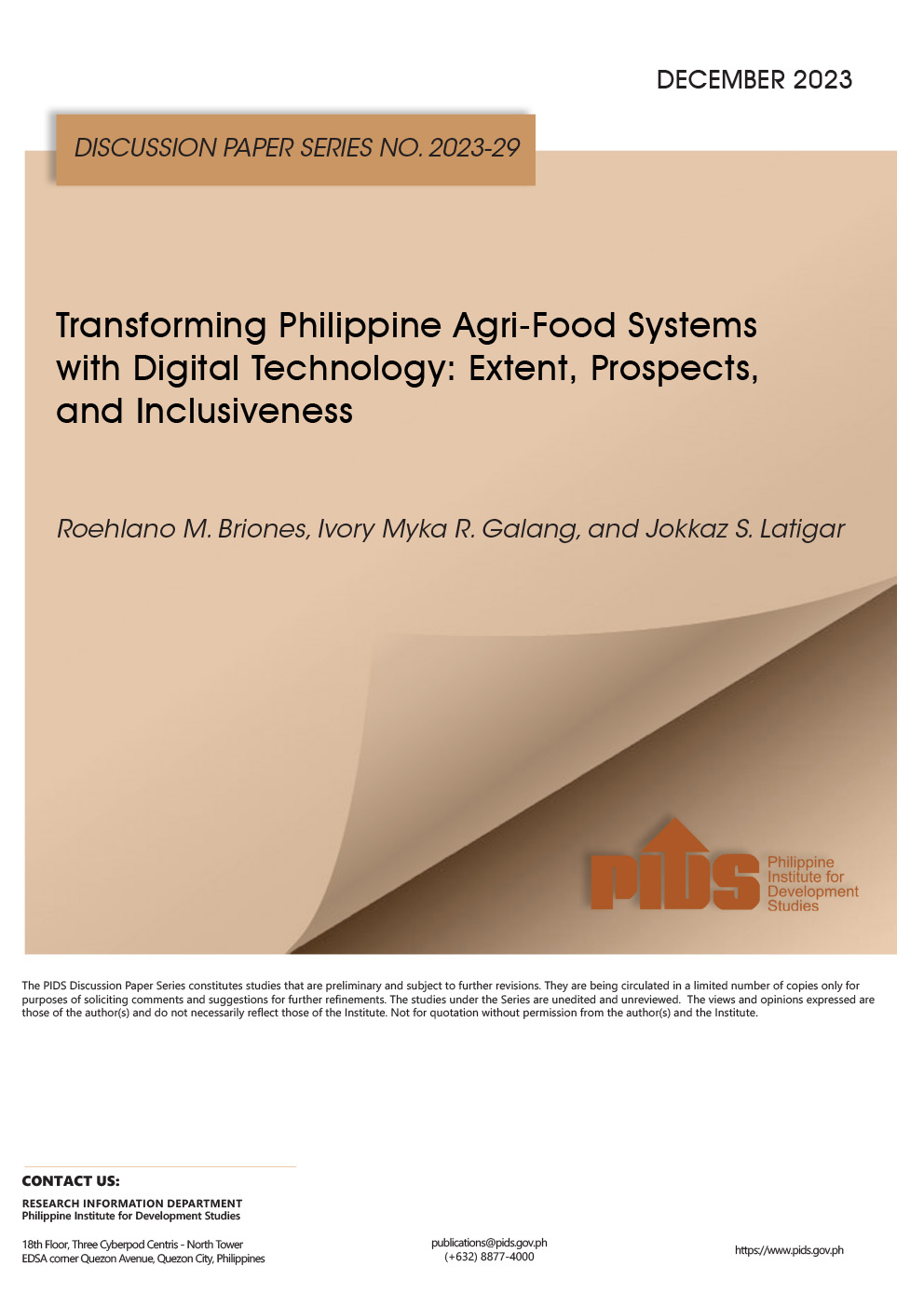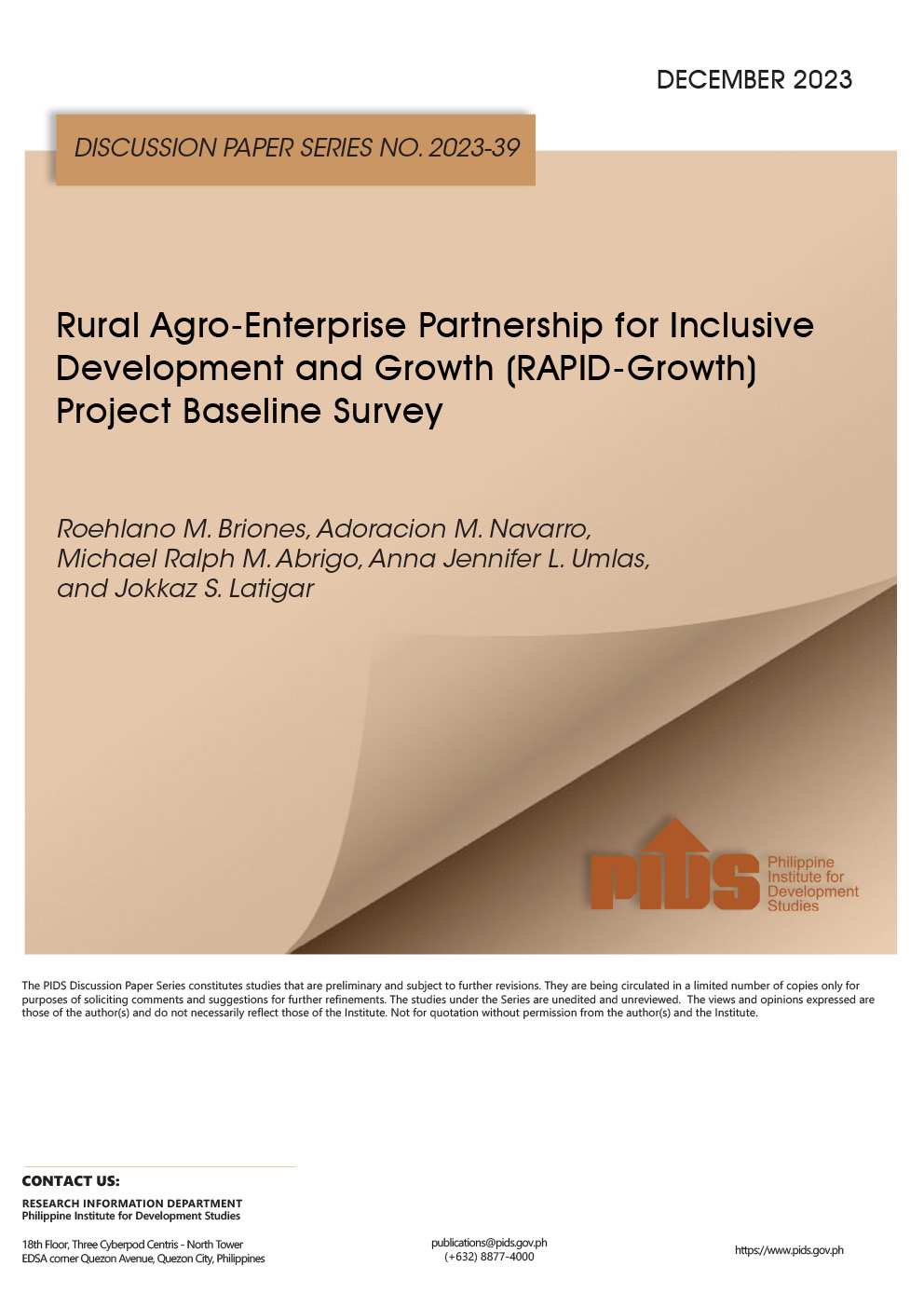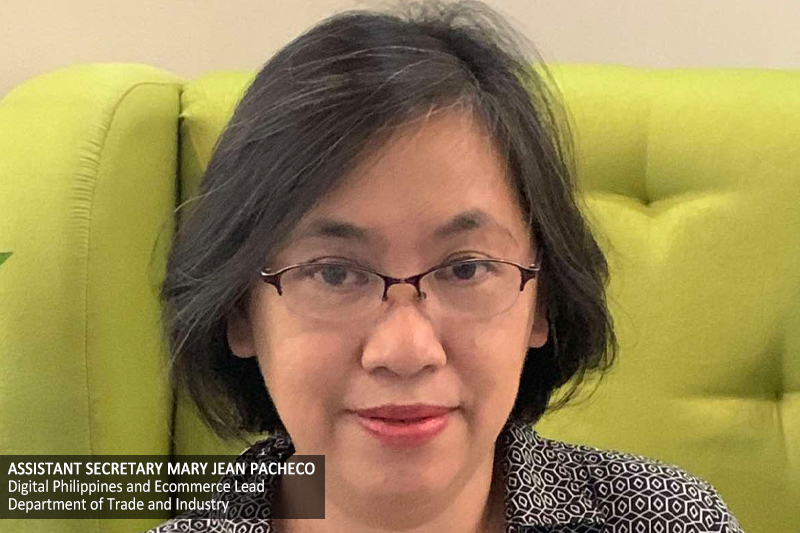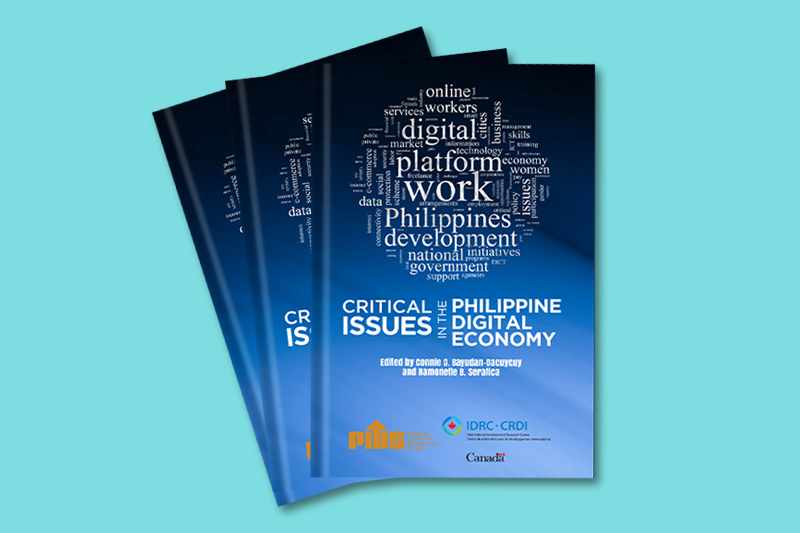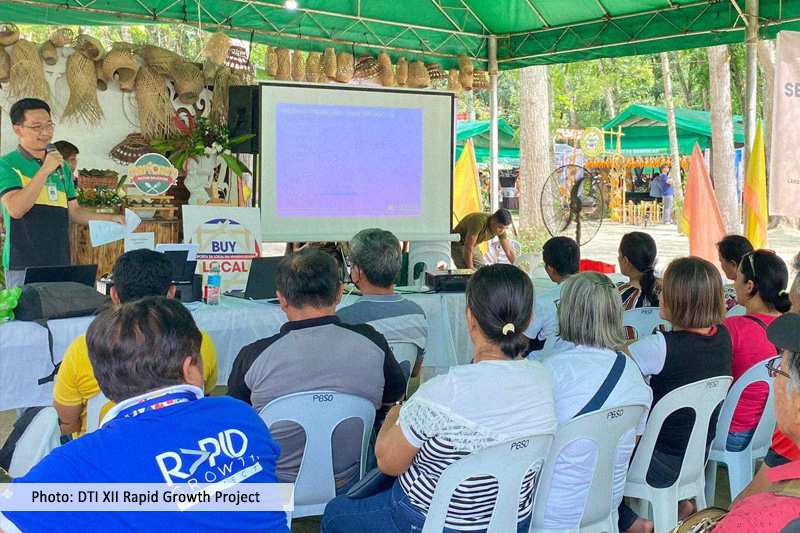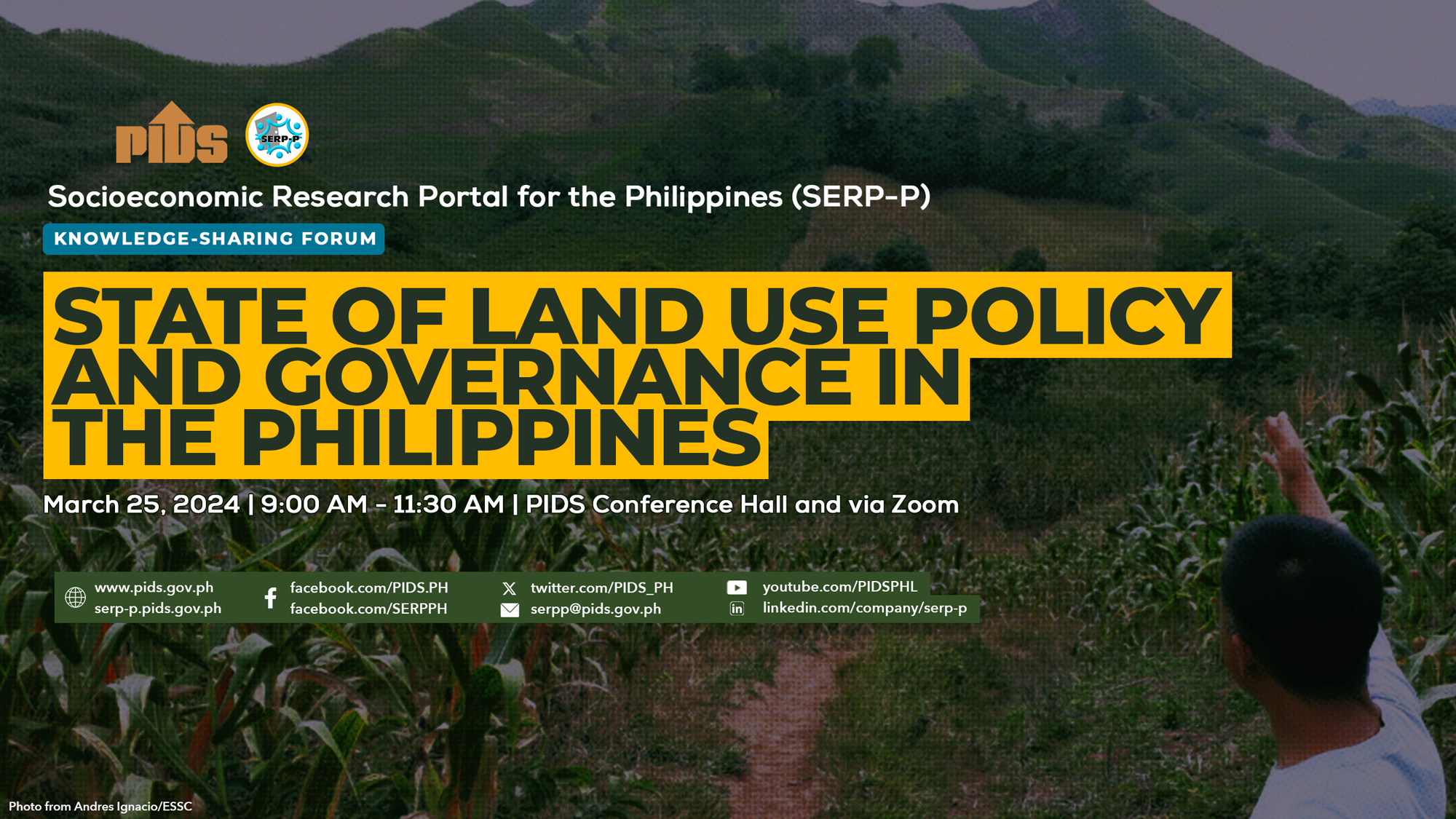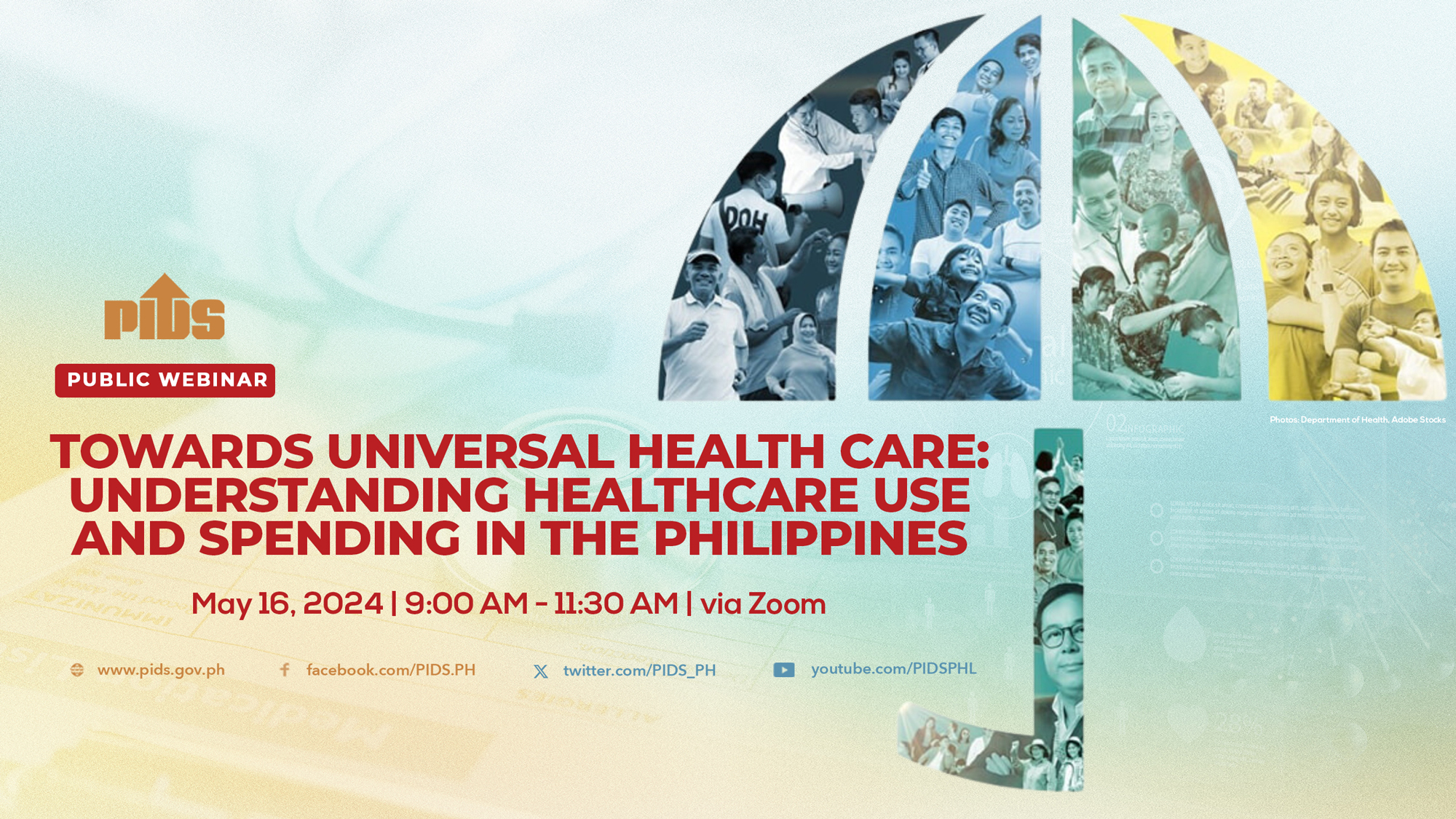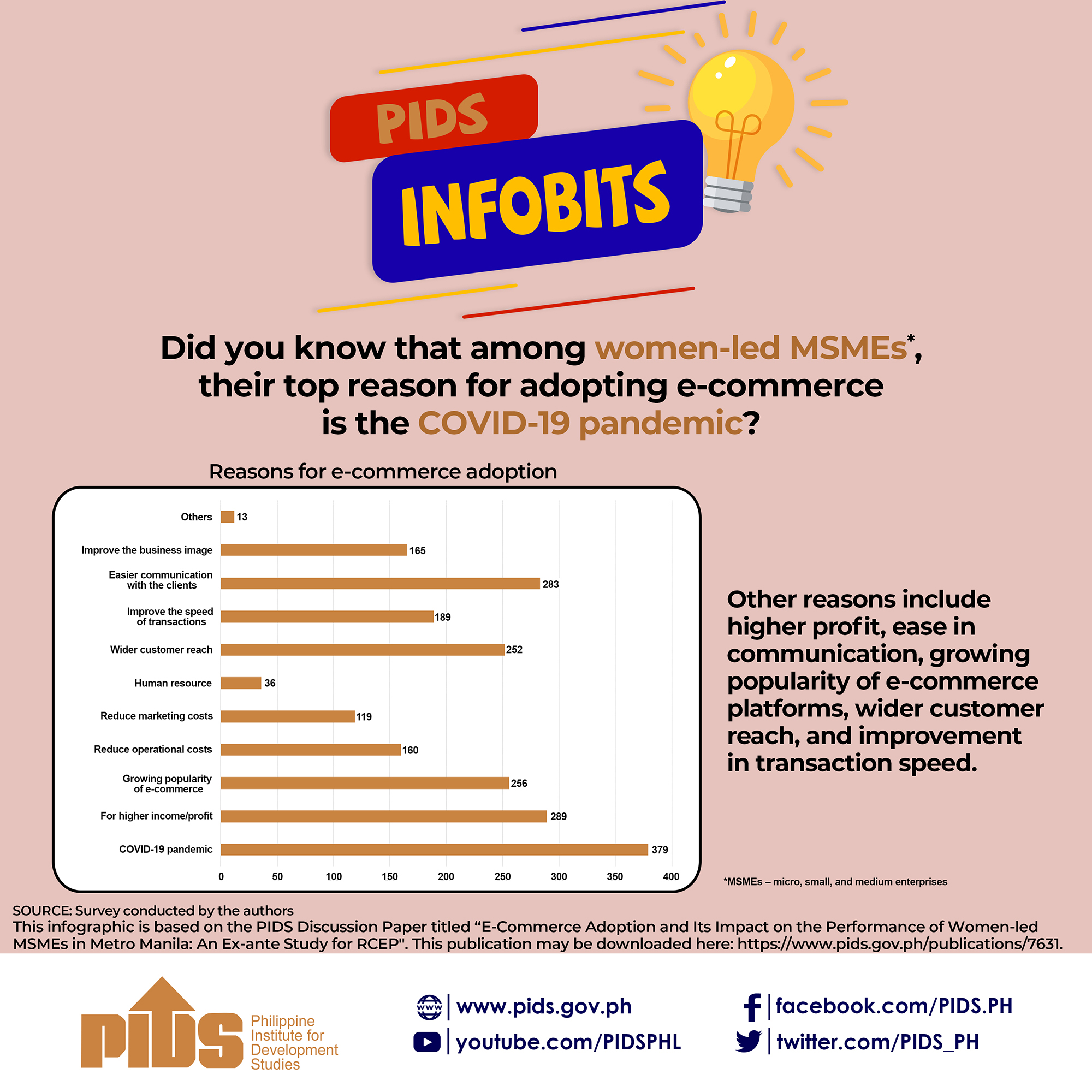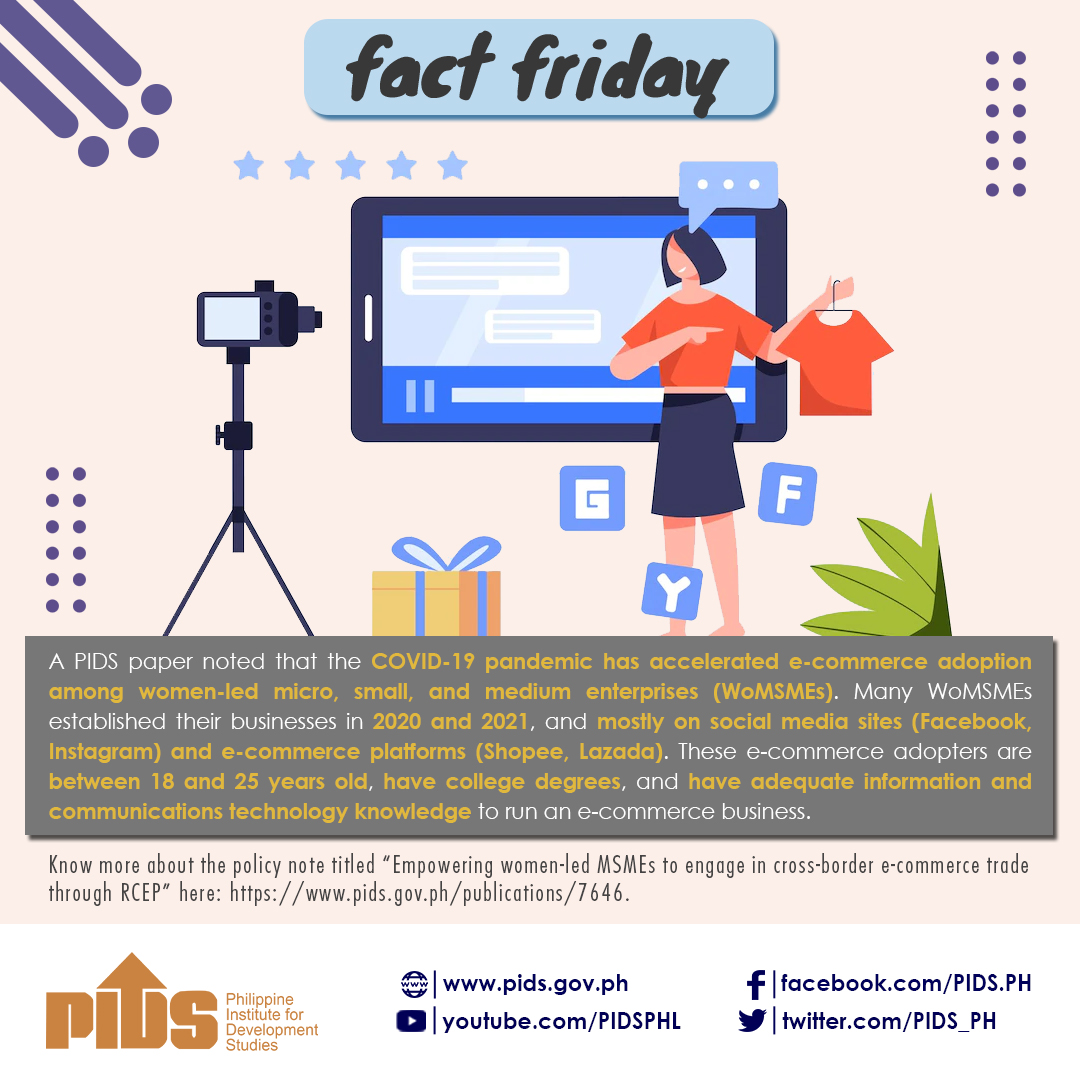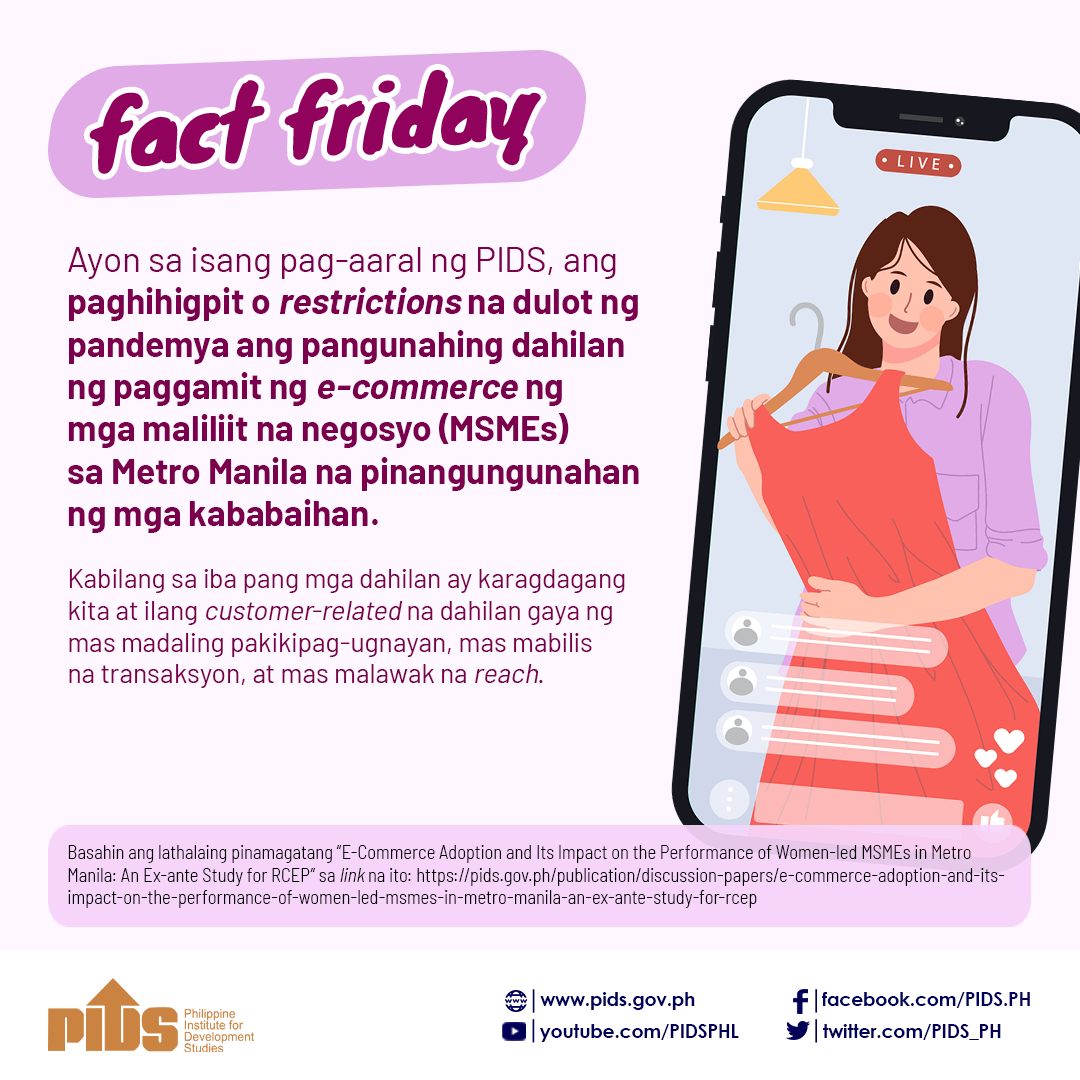A study by the Philippine Institute for Development Studies (PIDS) claimed that bridging the digital divide can empower Filipino farmers and modernize the agricultural sector by enhancing productivity, market access, and sustainability. However, digital agriculture also presents the risk of exacerbating the “digital divide”, potentially leaving vulnerable rural populations further behind.
These were highlighted at a recent webinar conducted by PIDS featuring the study “Transforming Philippine Agri-Food Systems with Digital Technology: Extent, Prospects, and Inclusiveness” authored by PIDS Senior Research Fellow Roehlano M. Briones, Supervising Research Specialist Ivory Myka R. Galang, and Research Analyst Jokkaz S. Latigar.
Galang, who presented the study, explained that there are benefits that come from the use of modern technologies in farming. Technologies such as precision agriculture, have been used in other countries since the 1980s, and have been credited for increasing farmers’ income by 20 percent. However, the lack of Information and Communications Technology (ICT) infrastructure, particularly in rural areas, and unequal access to related service present problems.
To unlock the potential of digital agriculture, the authors recommend harmonizing government data and advisory services for farmers and policymakers, creating a centralized e-commerce platform for agricultural products, and investing in rural infrastructure to provide connectivity for digital tools. The government should also continue to pursue community organization, establish rental markets for equipment, and provide traditional extension services alongside new digital options.
There is a need for a centralized repository or portal for all the government applications that will expedite the use of the current information for easier access.
“We envision to have one government e-commerce platform through the Department of Trade and Industry to consolidate different platforms to cater more users,” Galang said.
Prioritizing digital decision support systems and making public agricultural services more accessible online will provide farmers with valuable data and easier access to government assistance. Unified data sets and harmonized advisory for government decision support systems will allow effective access to essential information and eliminate confusion among end-users.
The webinar also featured successful local initiatives that validate the study’s recommendations.
The Albay Provincial Agricultural Office’s (APAO) Digital Clustered Rice Farming (DCRF), for example, utilizes an application and satellite system to modernize rice farming practices. According to APAO Technical Support Staff Marco Briz, the DCRF has already covered 500 hectares in Albay.
Another example is the Mango Pest Buster app developed by Agri-TIPS, which helps mango farmers identify infestations and receive personalized recommendations on pesticide use, significantly reducing costs. However, Agri-TIPS Chief Technology Officer Karl Medina pointed out that lack of access to smartphones and internet among rice farmers hinder technology adoption.
Despite the above challenges, the experts agree that the adoption of digital agriculture and other technological tools, and addressing accessibility issues can empower farmers and revolutionize the agricultural sector.
Watch the recording of the webinar here: bit.ly/pidslive042224. ###

